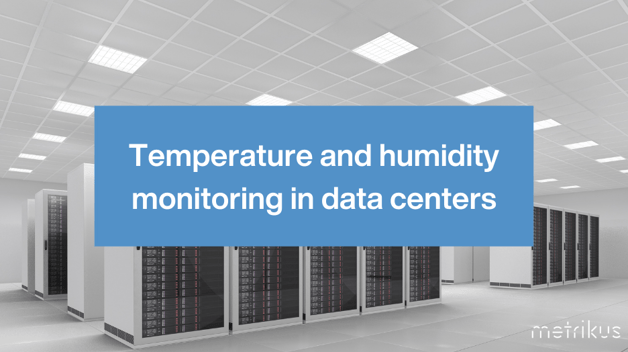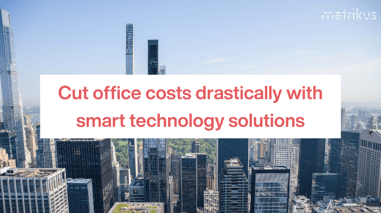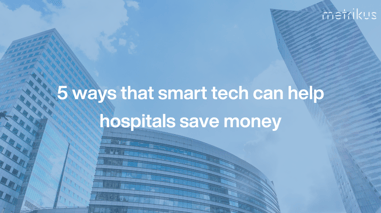Temperature and humidity monitoring in data centers
According to the Poneman Institute, the average cost of unplanned failure within data centres is a colossal $8,850 (£7150) per minute. And, did you know that overheating is one of the most common reasons for them to fail?
The best way to minimize the risk of overheating is to invest in an environmental monitoring system that can track data and irregularities in temperature. In this blog post, we discuss why monitoring temperature and humidity is essential, how it can be monitored and issues that may arise if not implemented.
Why is it essential to monitor the temperature in data centers?
Data centers can generate high heat levels, especially if running 24/7, and this can be extremely damaging to equipment. This means that temperature monitoring is crucial to prevent equipment failure and optimize performance. Failure to maintain the optimal temperature can lead to costly repairs, data loss, or corruption.
Data center monitoring also improves efficiency, reduces downtime and prevents disruption in operations. For example, if equipment overheats without warning and causes failure, which could have been contained, this can have a massively negative impact on business operations.
Why is it important to monitor humidity in data centers?
The humidity levels in a data center can not only cause discomfort for staff but can also bring about significant issues with the equipment.
With too much humidity, condensation builds up, but with too little humidity, static electricity occurs. Both scenarios can cause costly damage to the systems, so the data center humidity range should always stay between 40% – 60% relative humidity (rH).
Recommended standards of temperature in data centers
Optimal humidity and temperature measurement can also reduce energy costs and usage. Due to a growing concern over energy efficiency in data centers, ASHRAE Thermal Guidelines for Data Processing Environments have created a framework for the industry to follow and understand the requirements. The guidelines apply to A1-A4 data centers and server rooms.
Issues that can arise from not monitoring data centers
Any problems that go undetected will become worse and can cause significant damage to the data center facility.
- Equipment failure can lead to downtime and disrupt the whole business operation
- The consequences of overheating can cost companies millions to repair. According to Rotronic, measuring temperature and humidity can save companies thousands and sometimes millions of pounds per year
- Data can become lost or corrupted through system failure and is impossible to recover
- Overheating computing equipment is a fire hazard risk, so keeping them cool for health and safety is essential
- An overheating monitor or inefficiencies in the heating and cooling system will use much more energy, resulting in much higher energy bills
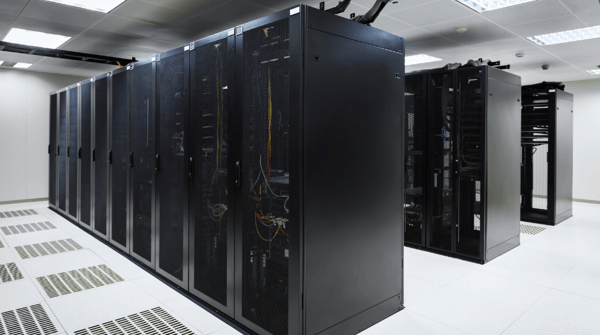
How do you execute temperature and humidity monitoring in data centers?
Data centers tend to rely on room temperature conditions, with equipment kept cool using air conditioning systems that blow cold air through the aisles.
When data centers overheat, the air conditioning within the room will attempt to cool down the room temperature level. The problem with this is that it may be too late, and the system may fail before temperature levels are able to cool down.
This method has also become increasingly inefficient as the demand for processing power continues to increase.
1. Use temperature and humidity monitors (otherwise known as environmental monitors)
Optimizing temperature and humidity levels involves using several temperature sensors around the racks' top, middle and bottom. The racks are an electronic framework that house devices, cables and computing equipment.
ASHRAE standards recommend that there should be three sensors per rack. Using a monitor provides analytics which can be used to optimize the heating and cooling systems.
In addition, data center sensors provide necessary insight into the performance of the assets. Administrators within the data center can then use this information to identify any irregularities or issues before overheating occurs.
2. Performing regular preventive maintenance
Adopting and performing a preventive maintenance strategy will allow all assets within the data center to be checked over regularly.
It’s common for a poorly maintained HVAC system to cause overheating of the space, increasing the probability of the computer systems overheating. Therefore, preventive maintenance should be performed on all parts of the HVAC system, including the air filters, compressors and piping.
What are the benefits of using IoT sensors to monitor data centers?
IoT technology is a continuously growing market, and it’s being used across the globe. IoT has many benefits when it comes to monitoring data centers.
1. Saving energy in data centers
The vast amounts of energy that data centers consume can negatively impact the environment. Innovations within IoT sensors allow for data centers to reduce their carbon footprint and run on less energy.
With IoT, data centers can now run on automatic tracking, allowing for flexibility and saving time and resources.
2. Remote monitoring in data centers
Data centers can be managed remotely through controlled IoT devices. A remote monitoring system collects vital data that is much more accurate than manual monitoring, preventing overheating and failures.
Monitoring remotely also saves companies money, time and resources, as scheduling, updating and configuration can all be done off-site.
3. Saving money
IoT is a long-term investment, which can decrease the number of computer failures by detecting any issues before damage occurs. Simply preventing failures can help companies save millions of dollars.
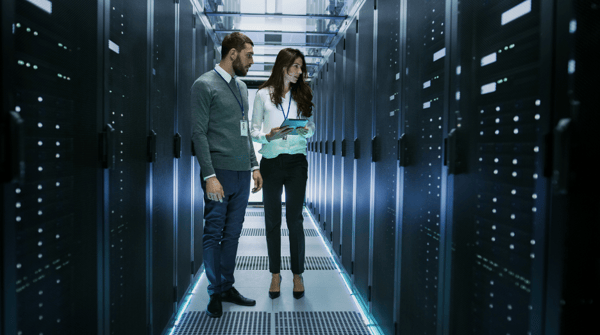
Our solution at Metrikus
Our data center monitoring solution helps you to manage your data center uproactively.
We deploy various sensors and integrate them in our software platform to provide real-time and reliable data. And this can help you uncover and solve any temperature and humidity issues that could harm your equipment and its performance.
Metrikus' solution used at Derby Data Center
We worked with a team at Derby Data Center to improve operational efficiency. Engineers were having to attend site regularly to check on the status of equipment, sometimes unnecessarily. And they had no visibility of hot and cold spots within the space which meant they were inadvertently wasting a lot of energy.
Access to our platform gave the engineers remote access to valuable data, reducing the number of call-outs, and saving time, money and vehicle emissions. Environmental sensors also showed inefficiencies in their heating and cooling systems, and they were able to rectify these issues before more problems could occur. This also led to a significant improvement in their energy efficiency.
Are you looking to improve efficiency in your data center?
There are many benefits to implementing temperature and humidity monitoring within data centers. If you’re looking for a company to help you make your facility more efficient in every way, contact us today.

